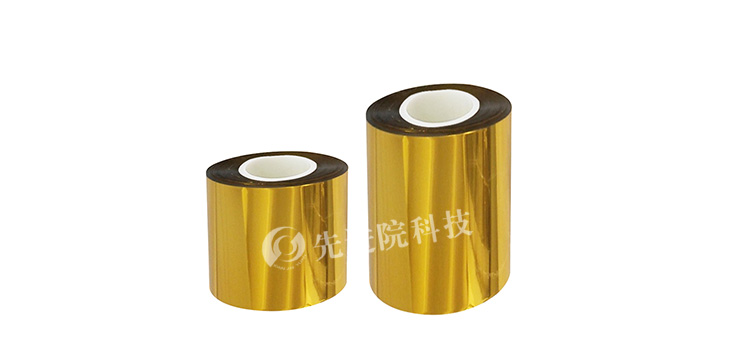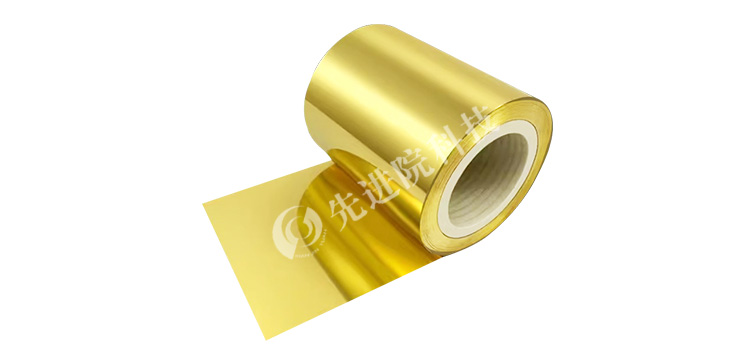

Hotline:0755-22277778
Tel:0755-22277778
Mobile:13826586185(Mr.Duan)
Fax:0755-22277776
E-mail:duanlian@xianjinyuan.cn
Gold plated copper foil has a wide range of applications in various fields such as electronics and communication, and its performance plays a key role in the quality and performance of related products. The magnetron sputtering double-sided copper plating process, as an important means of producing high-quality gold-plated copper foil, has many advantages, but faces a series of technical difficulties in practical operation. Deeply understanding and overcoming these difficulties is crucial for improvingGold-plated copper foilThe quality and efficiency of production are crucial.
Magnetron sputtering relies on magnetic field to constrain electron motion, thereby improving plasma density and sputtering efficiency. However, in practical devices, it is difficult to achieve absolute uniformity in magnetic field distribution. The difference in magnetic field strength at different positions can lead to inconsistent plasma density, resulting in different sputtering rates of copper atoms on the surface of the target material. When depositing on substrates such as PET, uneven thickness of double-sided copper plating may occur, affecting the overall conductivity and stability of the gold-plated copper foil.
Even if the magnetic field distribution is relatively uniform, the characteristics of the target material itself may lead to differences in sputtering rate. For example, subtle differences in the purity, density, and internal microstructure of the target material can result in varying degrees of difficulty in sputtering copper atoms from different parts. After long-term sputtering, uneven erosion will occur on the surface of the target material, further exacerbating the unevenness of copper plating and making it difficult to meet the strict requirements for thickness accuracy and uniformity of gold-plated copper foil.
Gold-plated copper foilThe surface condition of the substrate material (such as copper foil) has a significant impact on the adhesion of magnetron sputtered copper plating layer. If there are oil stains, oxide layers, or other impurities on the surface of the substrate, it will hinder the effective bonding between copper atoms and the substrate, leading to problems such as peeling and detachment of the copper plating layer during subsequent use. In addition, the roughness of the substrate surface also needs to be precisely controlled. Being too smooth is not conducive to the mechanical anchoring of the copper plating layer, while being too rough may lead to uneven thickness of the copper plating layer, affecting the stability of the bonding force.
During the process of magnetron sputtering copper plating, copper atoms continuously deposit on the substrate surface, generating a certain amount of internal stress. If this internal stress cannot be effectively released, it will accumulate inside the copper plating layer. When it reaches a certain level, it will lead to a decrease in the bonding force between the copper plating layer and the substrate, and even cause cracking or peeling of the copper plating layer. Moreover, during double-sided copper plating, the stress interaction generated by the copper plating layers on both sides further increases the difficulty of controlling the bonding force.
The magnetron sputtering double-sided copper plating equipment involves multiple key parameters, such as sputtering power, gas flow rate, vacuum degree, etc. These parameters are interrelated and influence each other, and any small fluctuation in one parameter may have a significant impact on the copper plating effect. To achieve stable and high-quality copper plating, it is necessary to precisely control these parameters and make real-time adjustments according to different production needs and substrate materials. However, in actual production, precise control of these parameters is not easy due to the complexity of equipment and changes in the production environment.
The entire magnetron sputtering double-sided copper plating process is a continuous process, from substrate loading, coating to unloading, each link needs to be closely coordinated to ensure the stability of the process. During the long-term production process, equipment may encounter unexpected situations such as vacuum pump failure, unstable gas supply, etc., which can interrupt the continuity of the process and affect the quality and consistency of copper plating. Moreover, in the production process of different batches, it is difficult to ensure that the copper plating effect of each batch is completely consistent due to subtle differences in raw materials, gradual wear and tear of equipment, and other factors.
Magnetron sputtering needs to be carried out in a high vacuum environment to reduce the interference of gas molecules on the sputtering and deposition process of copper atoms. However, maintaining a stable vacuum environment faces many challenges. For example, the sealing performance of the device may decrease over time, causing external air to enter the vacuum chamber and affect the vacuum degree. In addition, the performance of the vacuum pump in the vacuum system will gradually change and requires regular maintenance and calibration, otherwise it is difficult to ensure a stable vacuum environment, which will affect the uniformity and quality of copper plating.
During magnetron sputtering, the temperature inside the equipment will change. The fluctuation of temperature can affect the sputtering characteristics of the target material and the diffusion and deposition behavior of copper atoms on the substrate surface. For example, excessive temperature may cause changes in the crystal structure of the copper plating layer, affecting its performance; Uneven temperature may lead to differences in the thickness and performance of the copper plating layer. Moreover, the temperature changes in the production workshop can also have a certain impact on the equipment, increasing the difficulty of controlling the stability of the copper plating process.
Gold-plated copper foilThe magnetron sputtering double-sided copper plating process faces various technical difficulties in practical applications, such as coating uniformity, film adhesion, equipment and process matching, and environmental factors. To overcome these difficulties, it is necessary to start from multiple perspectives such as equipment research and development, process optimization, and production management, and continuously carry out technological innovation and practical exploration. Only in this way can we improve the production quality and stability of gold-plated copper foil, and meet the growing market demand for high-performance gold-plated copper foil.
The above data is for reference only, and specific performance may vary due to production processes and product specifications.

Advanced Institute (Shenzhen) Technology Co., Ltd, © two thousand and twenty-onewww.leird.cn. All rights reservedGuangdong ICP No. 2021051947-1 © two thousand and twenty-onewww.xianjinyuan.cn. All rights reservedGuangdong ICP No. 2021051947-2